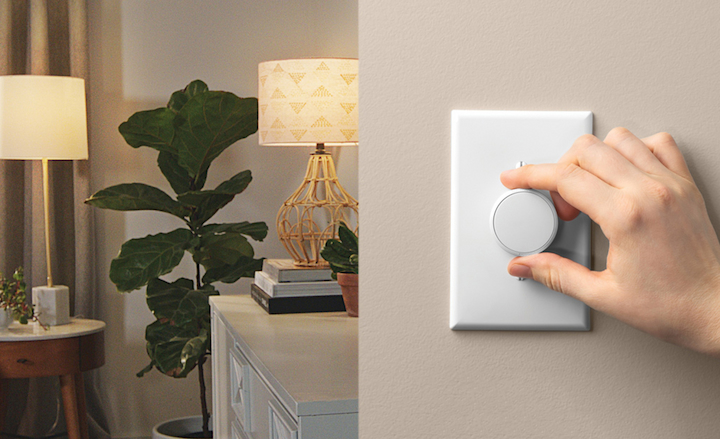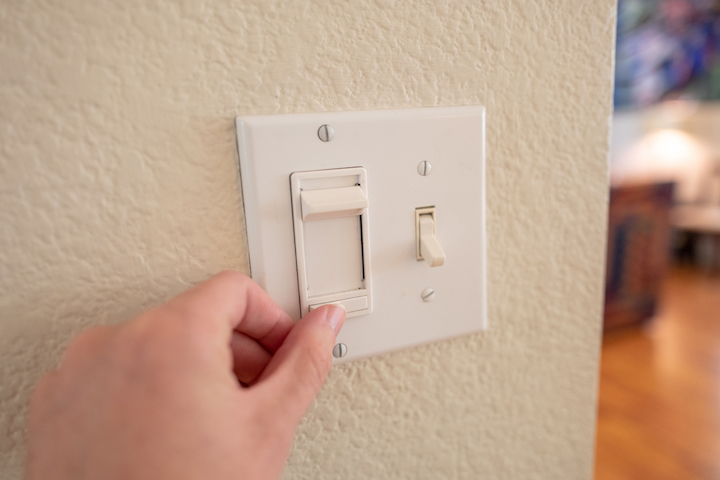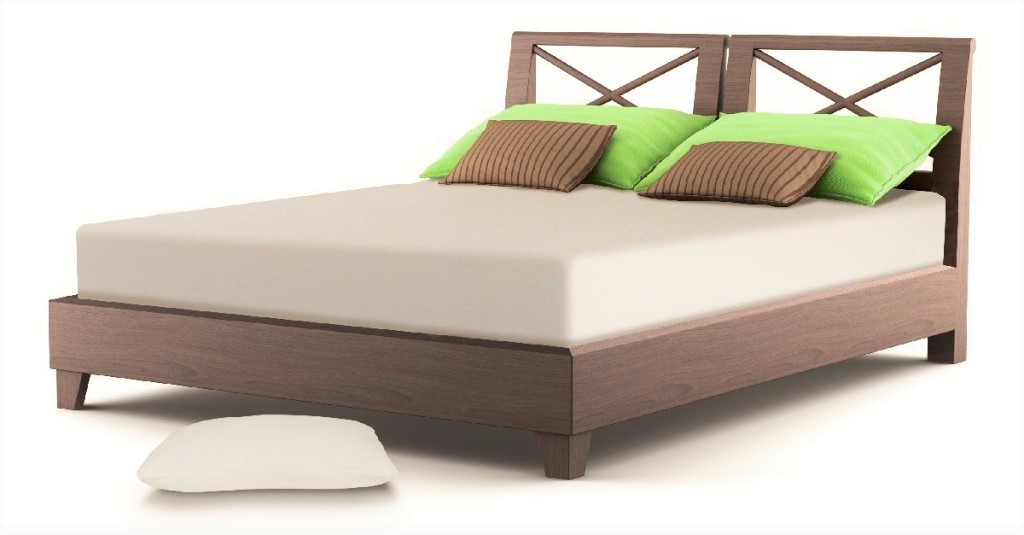Bright Light or Soft Glow: Exploring Dimmer Switch Options
Dimmer switches are one option for homeowners looking for the ability to dim lights and create the perfect atmosphere, as well as save on electricity bills. They can be installed anywhere in the house and work well with almost any light fixture, be it vanity lighting in bathrooms, or chandeliers in living rooms. And there are also smart variants that you can control remotely from a downloaded app on your phone or using supplied remotes.
Why Have Dimmer Switches?

Dimmer switches offer a few advantages when compared to traditional light switches. Possibly the biggest one is that they offer full control over lighting intensity. This means you can easily dim the light for that romantic dinner for two or when watching a family movie, or bump up the light to brighten up particularly dark rooms. The benefit here, if you have dimmers throughout your home, is the ability to tune the lighting in each room separately to complement natural light or set the scene for a particular occasion.
Another often overlooked advantage is the savings in electricity bills. With bulbs or LEDs dimmed down, you’ll be using a lot less electricity. Estimates vary (most at around 25 percent), but savings will add up over time. What’s more, you’ll be doing lights and bulbs a favour as they’ll be enduring a lot less heat and wear, so fewer replacements are required.
Lastly, with smart lighting features and easy installation, a dimmer light switch isan easy and painless way to tailor the lighting needs in your home. Dimmers come in different types and switching mechanisms, as well as some interesting designs and colour options that also fit in well with the rest of the décor. The only thing missing is a certified electrician to get the job done.
Dimmer Types
Most light dimmers may look the same, but there are key differences in how they work and whether they’re compatible with different light sources. The general divide is between leading-edge and trailing-edge dimmers. The first reduces the alternating current at the leading edge of the waveform, resulting in a rush of voltage during every half cycle. They’re typically used with incandescent bulbs or mains voltage halogens.
Trailing edge dimmers, on the other hand, work with lower wattages and make use of the current as it nears the end of the waveform (thus the name) and is mostly used with newer types of LEDs.
Compatibility and Bulb Types
This grouping of dimmers into leading and trailing edge types then determines the light source they can comfortably work with. While trailing edge dimmers are fine for dimmable LEDs, they may not get the light intensity required in incandescent or halogen bulbs running on higher wattage.
Moreover, dimmable lights will work fine in non-dimmable switches and circuitry (but forsake the dimming function); however, the opposite is not true You can’t make non-dimmable light bulbs work in dimmable circuits. The key here is compatibility, so choose the right bulbs for the right switch.
Advanced Functions

Most dimmer switches are of the rotary type and control a single light source. But buyers will also find two-way, three-way, and multi-dimming switches. Two-way switches allow light to be turned off, on, or dimmed from two switches in a room. This is convenient in larger areas, especially living rooms or kitchens in open layouts.
Three-way dimming is similar but allows light to be adjusted from three different switches. And multi-way dimming is a recent option that allows adjusting lights from multiple switches anywhere in the house. The advantage here is that it saves space, makes for a neater integration with the rest of the room, and simplifies wiring.
Go with a smart dimmer light switch if you need added functionality. This can be controlled wirelessly or via Bluetooth and is programmable. You can set smart dimmers manually or have them dim or turn on or off at specific times of the day. And you won’t be paying much more than when going for ordinary switches that run on incandescent, halogen, or low-wattage LEDs.
Various Designs for Better Fit and Safety
Dimmers can additionally be found in two distinct styles, meaning actuating the switch is done in different ways. More common are rotary knob switches, but push-button dimmers are also making their way back. Knobs can be pressed to turn the light on or off and are turned to alter the light intensity. Push buttons get lights on in the same way, but altering the intensity is done using subsequent long presses. Which type you choose is generally a matter of personal preference.
When buying, don’t confuse the knob or button for the whole switch. There’s a lot more going on, and mechanisms in three- or multi-way types have some complex electronics, with most now deploying built-in circuit breakers to shield circuits and anyone using the switch, especially during electrical faults or power outages. This is one feature that comes in handy if safety is a priority.
Lastly, like all switches, buyers get a choice of finishes, textures, and colours in both knobs or buttons and the surrounding wall and faceplates to suit the room. Electrical suppliers usually have distinct lines of switches, sockets, and accessories, so pair your dimmers carefully for a neat and pleasing fit.






